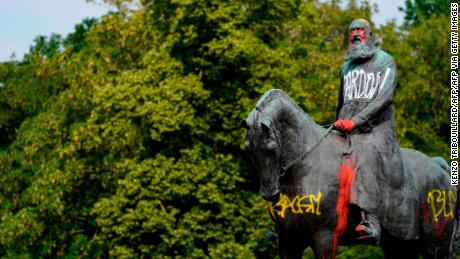900 319 0030
enquiry@shankarias.in
Why in news?
What is the protest all about?

Defaced statue of King Leopold II in Brussels
Who is King Leopold II?
How far was the exploitation?
Is this controversy new?
What is the contention however?
Is there any opposition to anti-racism protests?
Source: Indian Express